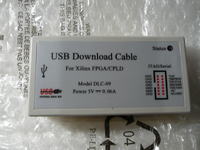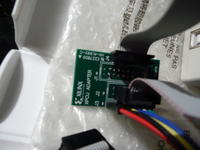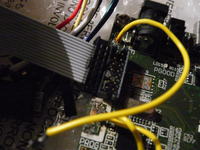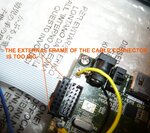mrflibble
Advanced Member level 5
Digilent told me that I should format the mem stick to FAT (I did but it didn't work either). They also told me that the .bit file must be compatible with the FPGA, otherwise the board rejects it... well I think the .bit file is compatible,
Well, the .bit file really really works on my Atlys board. And I doubt you will have a different spartan-6 chip on there. Regardless, you can tell digilent that the bitfile you use is known to work on another xc6slx45-2csg324. That's the target I used for that .bit file.
..anyway at this moment I'm totally hopeless.... I'm not even sure the JTAG programmer I will receive in about 20 days (hopely) will work....
Even if the JTAG or stick will at last work.. well I will anyway find myself with a board which is not the board I paid for... I have thought about this, I need a fast port to store on a external device the frame grabbed from HDMI input port to realize my portable HDMI recorder... the USB Adept port would have been perfect for that... but now that it is gone?
Breathe in, breathe out.
1 - You can always stream udp packets from the gbit ethernet interface. That's even faster than the usb port.
2 - You can use the usb port with the Exar UART chip, but it's probably slower than the port you molested.
3 - After you find someone to do the solderwork for you, in all probability the molested port will work again.
So all's not lost. Just stay away from the soldering iron for now, so you don't make things worse.
---------- Post added at 23:46 ---------- Previous post was at 23:43 ----------
If I understand correctly mrflibble has the same board and he managed to make it work, maybe he can upload his bit file which works for sure so that you can try it too and at least you will be sure that the bit part is correct and search for another cause if it still doesn't work.
Indeed, I have the same board. And I already made a .bit file for him, with some leds + switches. The bit file works just fine here, the same way as all the other ones I've made for the Atlys board. So I seriously doubt the provided .bit file is the issue. But as I previously mentioned, he can e-mail digilent about it. I provided the specific target device used for the .bit file.
---------- Post added at 23:57 ---------- Previous post was at 23:46 ----------
The only other thing I can think of with the stick is that for whatever reason the file corrupted. I doubt it, but what the hell, can't hurt to double check.
Get the MD5 sum for the file ON THE STICK.
If you don't have a tool for md5um on windows, quick google told me this is reasonable:
WinMd5Sum Portable | PortableApps.com - Portable software for USB, portable and cloud drives
And as I mentioned earlier:
The file you should be putting on that stick should have this md5 checksum:
912b77143bb9111e53248b32d4f72f2e test.bit
So check if the md5sum is okay.





